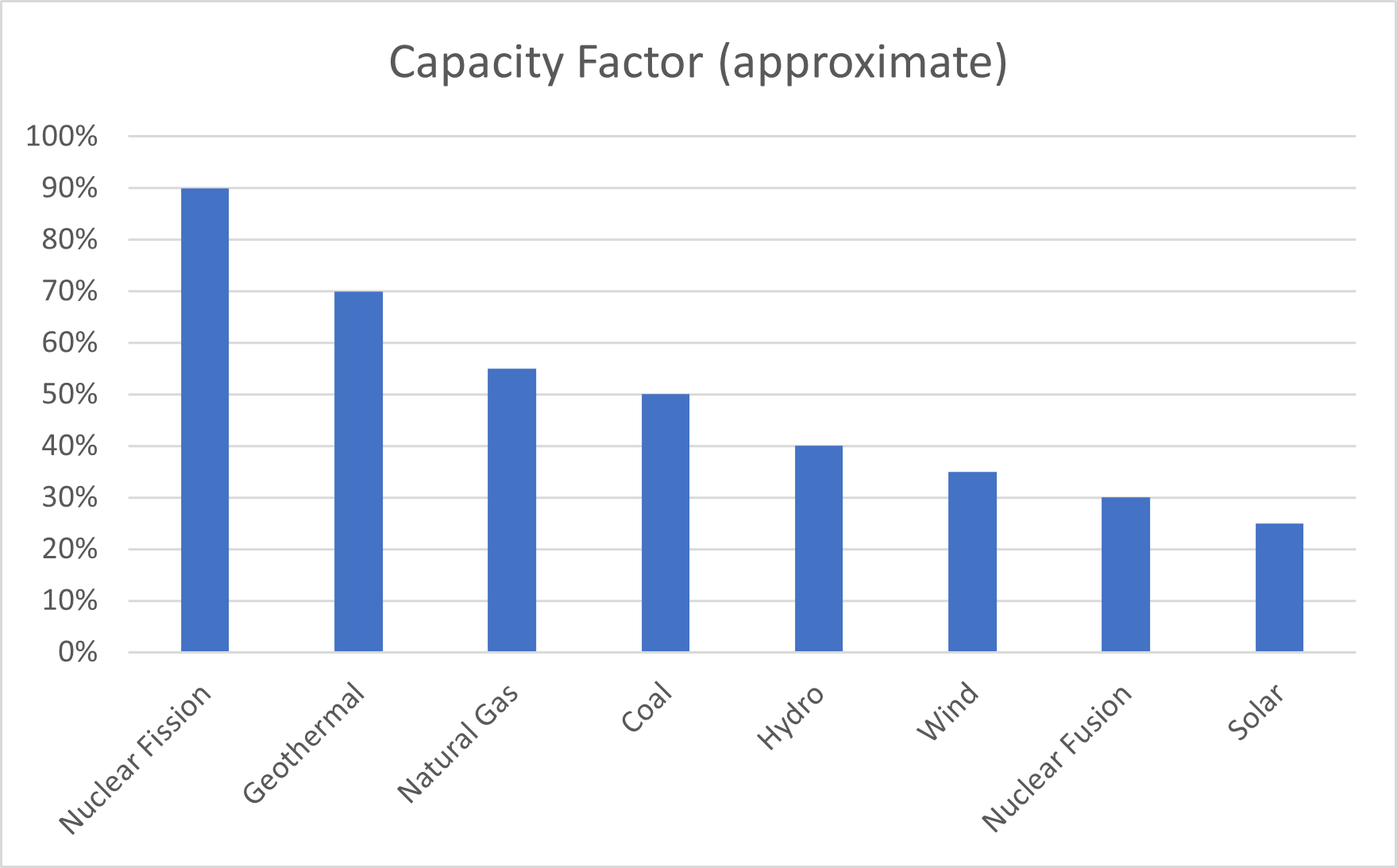Maintenance, Breakdowns and Availability

The complexity of a fusion reactor means the reliability of all systems and components must be very carefully considered. This issue is empathised in a presentation by: Mohamed Abdou. The availability is taken up in a sidebar in the Science article of Dan Clery.
Availability is defined in terms of rates of component failure as:

where MTBF is the Mean Time Between Failures and MTTR is the Mean Time To Repair. Abdou calls availability, the "Achilles' Heel of Fusion" and suggests it might be as low as 5%.
Device availability is reduced by two types of outages: scheduled outages (maintenance) and unscheduled outages (breakdowns). The ITER operational availability goal is 32%. The EU DEMO reactor has a target for availability >30%, defined as fraction of the time generation electricity. For US DEMO designs the availability goal is >50%. These availability targets are quite low compared to fission reactors where the equivalent value is 80-90%. The sections below explore what availability could realistically be expected for a commercial fusion reactor.
Maintenance
A tokamak fusion reactor must employ a remote handling maintenance system to replace the components inside the vacuum vessel. The EU-DEMO design has 48 divertor cassettes and 80 breeding blankets module which must be replaced at regular intervals: approximately every 2 years for the divertor and every 4 years for the breeding blanket. Each divertor module will weigh about 8 tonnes and each breeder blanket modules about 80 tonnes. The replacements take place through access ports shown in the figures below, divertor parts through the lower ports and breeder blanket modules through the upper ports.

Access ports to exchange breeding blankets

Key in-vessel components to be exchanges and their entry-egress routes, from Crofts et al.
The radiation dose rate inside the torus (caused by neutron activation) at the beginning of a maintenance operation is expected to be 2000 Sv/hr from gamma rays. This can be compared to the lethal dose for human beings of about 5 Sv. So, all operations must be performed with remoted handling equipment far from any people. A consequence of the radioactivation, is that once disconnected from the cooling pipes, the components warm up to temperatures exceeding 200°C. It is clear that making the remote handling equipment needed to rapidly perform these operations will be very difficult.
Breakdowns
The rate of component breakdown must be carefully estimated based on complete design details. Estimates for the US-DEMO design from Abdou et al. (2015) are given in the table below.

Results of component availability estimates for US-DEMO components.
A feature which is important in this table, is the estimate for a major coil failure at 0.4%/year, which with 24 items becomes 10% for one major coil failure per year. Here, in the US-DEMO design, the repair time is given at about one year. In the ITER/EU DEMO design, repairing a coil may be much longer or impossible.
Availability Estimate
No complete published predictions for total fusion power reactor availability exist. In this section estimates are made from information, which is published, supplemented by private communication from a number of sources.
Scheduled downtime for component replacement because of radiation damage will be very large. The regular replacement of the limiters, divertor and breeder blanket modules will be the biggest contributions to downtime. It is likely, any other regular maintenance for equipment such as the cryogenic system; tritium system; fueling system; vacuum system; etc., can be done simultaneously and so add no further downtime. Two large time factors are common to any intervention inside the vacuum vessel: a cooldown time following machine stop, to allow for radioactive decay of activated components, and at the end, a vacuum pumping time to re-establish the vacuum quality necessary for tokamak operations. Three types of replacement operations are assumed here: limiters every 1 year, taking 1 month; divertor every 2 years, taking 4 months and blankets every 4 years, taking 6 months. Replacements are done simultaneously, and so short operations are masked by longer ones. These assumptions give 20 months of downtime for every cycle of 48 months, so a scheduled average availability of 58%.
Unscheduled breakdowns due to component breakdown, make up the second contribution to the overall availability. This is taken from the Abdou et al. (2015) component estimate in the table above at 61.5% availability.
A further unknown, but possibly dominant, availability loss is that due to interventions for disruptions which can cause significant damage inside the vacuum vessel. The rate of disruptions has been large in early and operational tokamaks, and this must be drastically reduced for commercial fusion reactors. Taking an optimistic one disruption per year and assuming entry into the vacuum is necessary to check for damage but with no time for any possible repair, this would reduce the yearly availability by two months per year, 83%.
Overall availability is by combination from above: 0.58 x (0.615 X 0.83) = 0.30, but if the rate of disruptions is more than one per year this would become significantly lower. The estimate of availability made here is not far from the values of the DEMO and ITER goals. Regrettably, for a commercial reactor an availability factor of 30% seems economically unviable. This availability estimate for a fusion power plant is compared to the equivalent Capacity Factor for other electricity generation technologies in the plot below.

Capacity Factor for various electricity generation technologies. This is the percentage of the year the plant produces electricity. For some technologies like wind, solar and hydro this takes into account weather losses. For fusion it is just the availability value.
This low availability enters directly into the cost of electricity as described in the page Cost of nuclear fusion power.